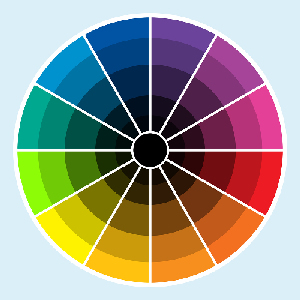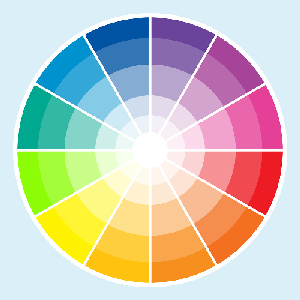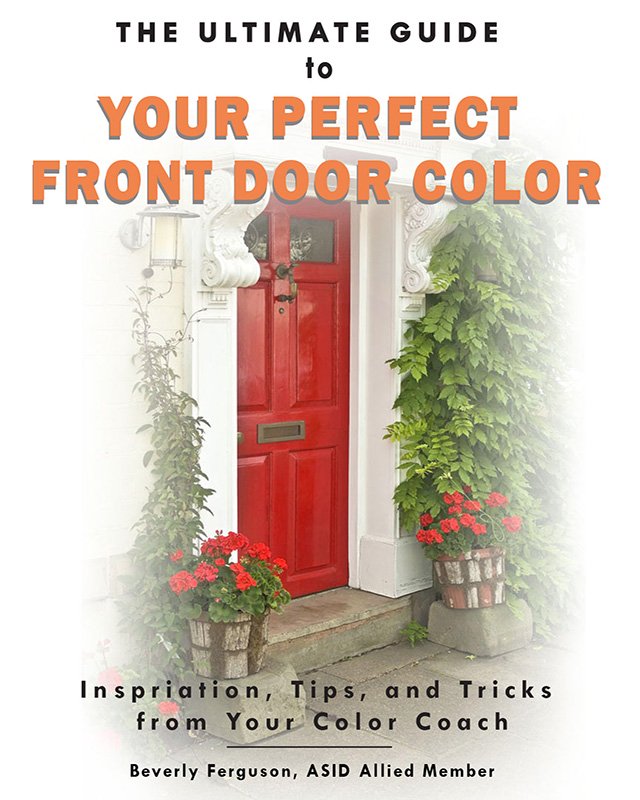The Color Wheel -Your New Best Friend
Remember back to art class in 3rd grade? It may be a long time ago but I think that everyone has seen or used a color wheel.
Q. What exactly is the color wheel?
A. It is a tool which describes the relationships between colors.
Q. Colors have relationships?
A. Oh yes, all color is relative. That is, every color is defined to a degree by the company of the other colors it keeps. Just like your mother told you that you’d be judged by who you decided to pal around with…it’s the same with color. Let’s talk about how the wheel works. Here are two wheels, at the outside rings are the colors at their purest, unadulterated by anything else. Color pros call color in this state “high chroma” or “high intensity”.
Color Wheel (tones)

On the first wheel, each of the successive rings show the colors as they have black added to them. Note how they get more and more muted as they get darker. What is happening? You are taking the color at its purest and toning it down by adding black. Colors with black added are called tones.
Color Wheel (tints)

On the second wheel, each of the colors has white added. Again, they are more and more muted even though they are getting lighter, they are not getting brighter but they are getting lighter. Anytime you add a color to another, the colors have to get more muted…it's the law! Colors with white added are called tints.
1) Complimentary - Complimentary colors are opposite each other on the wheel, red/green, blue/orange, yellow/violet. Nothing makes a color look more like itself than when it is opposed by its compliment. Complimentary color schemes are the most lively.
2) Analogous – Analogous colors are those which are next to each other on the color wheel. Pick one of the pie shaped wedges out of the wheel, now include the wedges to the left and right of the first one…now you have an analogous scheme. Analogous schemes are considered to be harmonious. They are also simple since you are not matching colors but instead coordinating. It is hard to make a mistake with this one...but it is possible. ;)
3) Monochromatic – Monochromatic schemes are ones which use tints and tones of the same color. A monochromatic scheme is the most restful of all and one of the most difficult to balance.
4) Triadic - Triadic color schemes are simple to construct. Simply place an equilateral triangle over the color wheel with the points of the triangle landing on any three colors…for instance; red-blue-yellow is an example. Triadic color schemes are very solid and strong. They allow you to include multiple colors to your design. This would be especially helpful with a Victorian or Craftsman style home.
Like any tool, the color wheel responds to the skill of its user. The relationships between colors on the wheel never change. Like a musician, a beginning player will read every note literally, working tightly within the framework of the notation. The more experienced player is able to use the notation as a base for embellishment and refinement. I wouldn’t expect anyone with beginning color knowledge to be able to construct a sophisticated color scheme...but I do know that a little knowledge and a good tool can get you to a comfort zone which is waaaay better than picking colors willy nilly. The color wheel has been around for a very long time because it works, and it will work for you.
Return to Exterior House Paint Colors Home Page
